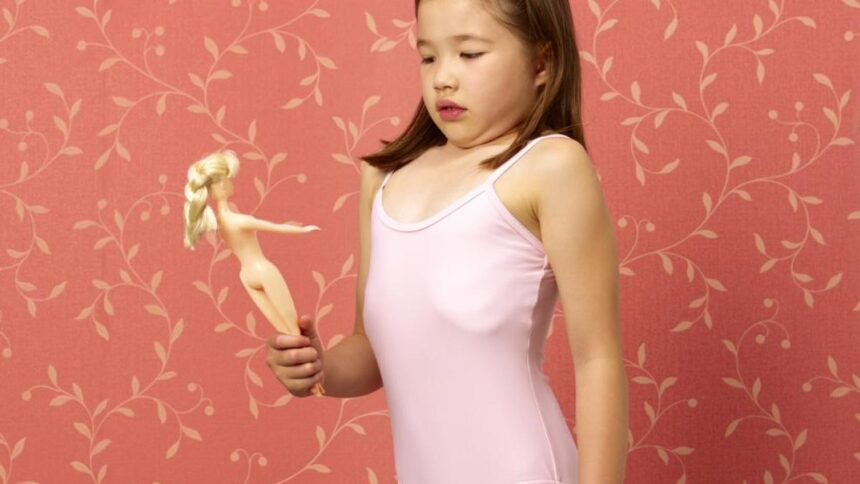What is body image?
Body image is the mental representation that each person has of his or her body and physical appearance (Raich, 2000) and the experience one has of it (Guimón, 1999). It could be summarized as how each person perceives, feels and acts with respect to his or her own body.
As Thompson, et al. (1999) point out, it is made up of three components:
- Perceptual component: refers to the accuracy with which body size, shape and weight are perceived.
- Subjective component: refers to attitudes, feelings and evaluations regarding the body.
- Behavioral component: represents the behaviors generated by perceptions and feelings. For example, following a balanced diet, exercising, following a restrictive diet, compensating, among others.
Depending on the feelings and evaluations regarding the body, as well as the behaviors that are taken in front of such evaluations, a positive or negative body image will originate in each one of us.
Negative body image
When the person feels uncomfortable with his own body, there is anxiety and/or shame, as well as having the conviction that other people are attractive, associating their bodies to personal value and/or success. Faced with a negative evaluation we can relate to our body in two ways: In a healthy way, following healthy habits, balanced diet and sport practice or on the contrary, in a pathological way, as would be the restriction or obsession with the body and food.
Positive body image
It means that the person feels at ease with their body, comfortable and confident on a personal and social level, without basing their self-worth on their figure.
The development of body image depends not only on oneself, but there are other factors that can influence the evaluation of one’s own body. For example, implicit or explicit messages that are received throughout life through the immediate environment, or from society (from the media and social networks).
Body image is not a static concept, but can be modified, either towards a greater degree of acceptance or towards a greater degree of rejection. Both puberty and menopause are two vital stages in which the body undergoes changes, therefore, emotions and feelings in relation to the body can also be affected, and therefore, the evaluation of body image.
Body dissatisfaction
Since the last decades, concern for health and self-care has increased. There is greater awareness, and more and more people are deciding to change their eating habits to varied and balanced diets, as well as to practice physical exercise.
However, greater body dissatisfaction has also been observed. Several studies report alarming figures. For example, in Spain 5-6 young adults feel dissatisfied with their body, in women the prevalence is higher (72% present moderate dissatisfaction or high dissatisfaction and 8 out of 10 wish to lose weight) (Berenguí et al., 2016).
For a long time body dissatisfaction has been associated only with women, a fact that has influenced the number of studies on body dissatisfaction in men. Even so, recent studies indicate that compared to three decades ago, the rate of body dissatisfaction in men has increased from 15% to 43%.
That’s how I look, that’s how I’m worth
Self-esteem is based on feelings, thoughts, judgments, experiences and sensations about oneself. It can be summed up as how you think and feel about yourself.
Self-image is a key component of one’s self-esteem. The assessment we make of our physical appearance can develop a significant discomfort that affects our daily life and therefore, our quality of life can be altered.
The body 10
Festinger (1954) postulated the theory of social comparison, which indicates that people compare themselves with others in order to evaluate themselves. The results of this author’s study indicate that the more social comparison, the lower the self-esteem. And advertising has had a lot to do with the development of established beauty standards.
More and more clothing companies are promoting campaigns starring models of different sizes. Firms such as Dove (one of the pioneers), H&M and Oysho, among others. These brands have opted for advertising through women with real bodies, bodies with stretch marks, cellulite and scars. Silhouettes with which women can identify, compare and admire.
Violeta by Mango, is a brand aimed at the public that uses large sizes, however, what may seem inclusion, is not. Since the simple fact of creating a different brand and therefore, another establishment, is already stigmatizing, differentiating one type of woman and another.
In addition, there are still many brands that are promoted from models with extremely thin bodies, mostly are high fashion brands, in which the thin body is associated with success, money and exclusivity.
For example, Victoria Secret launched a very media campaign in which they showed the world what was ”The perfect body”. In the ad, as you can see below, there are ten women who all seem to be carved by the same pattern. Does this mean that these are the perfect bodies, and that all the others are not?
Dear Kate, another brand, took advantage of the media boom to create a campaign featuring ten women of different sizes, heights and skin color. As a way to promote inclusion and diversity, and at the same time, to vindicate itself against the Victoria Secret ad, the campaign was also named ”The perfect body”.
This type of advertising has been haunting our society for years, mostly women, however, more and more men are rebelling against clothing campaigns in which only muscular and toned men appear.
It is well known the influence that the media can have, however, it is almost impossible to become aware of the power they can exert on body image and self-esteem. For example, Toro, Cervera and Pérez (1989) carried out an analysis of the advertising contained in ten Spanish women’s magazines and observed that one out of every four advertisements directly or indirectly encouraged weight loss. Currently, some Spanish magazines continue to publish and give importance to the fact that a celebrity has gained weight, they may even publish, for example: Is she pregnant, in the case of women, and in the case of men, What has happened to her muscles?
Instagram and body image: 24/7 unfiltered advertising.
In recent years, a real technological revolution has taken place worldwide. Before, advertising appeared on television, magazines, newspapers or billboards.
Society was already exposed to it on a daily basis, but today, however, it can be accessed at the click of a button at any time and place of the day, from a cell phone.
The biggest social comparison of the moment (Festinger, 1954), is undoubtedly through Instagram and influencers.
Most of them promote healthy habits and the practice of exercise, however, there are others who until recently promoted miracle diets, laxative teas or diet shakes.
A few weeks ago it came to light that both Instagram and Facebook will restrict this type of content. Therefore, they will cease to be visible to users under 18 years of age, while limiting the scope of exploration of this type of publications.
Another aspect to highlight related to self-image and self-esteem, is the possibility of retouching the photos you upload to your social networks. There are many applications with which barbarities are done, such as, for example, outlining the legs, making them thinner; decrease belly; increase the chest, among others. Many people live their daily lives comparing themselves with unreal people, who do not exist, but are the result of a retouching application.
Wanting to have the body of X influencer, can lead to follow miracle diets, without professional help, which end up leading to an eating disorder: such as binge eating disorder. As well as, a high demand and low self-esteem, can develop ruminative thoughts about the body and food that haunt the day to day and therefore, the quality of life.













